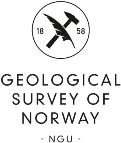
(Last updated: 30.01.2025)

|
Norsk versjon | ||||
| THE ORE DATABASE | |||||
| Occurence 3122 - 002 Vikeby | |||||
| (Object Id: 6637) (Last updated: 30.01.2025) |
|||||
|
|
| Location |
| County: | Østfold | Municipality: | Marker (3122) |
| Map 1:50000: | Rødenes (2014-3) | Map 1:250000: | Oslo |
| Coordinate system: | EU89-UTM Zone 32 |
| East: | 644224 m. | North: | 6605976 m. |
| Longitude: | 11.5528350 | Latitude: | 59.5671300 |
| Show on map |
|
|
| Resource |
| Resource Type: | Ferrous metals(Fe, Mn, Ti) | Resource Subtype: | Iron-Titanium | |
| Element(s): | Fe Ti |
| Importance |
| Raw material meaning: | Little Importance (reg. 18.02.2015) |
Mineralization |
| Era: | Proterozoic | Period: | Paleoproterozoic | |
| Genesis: | Form: | |||
| Main texture: | Min. distribution: |
| Main grain size: | Main alteration: |
| Strike/Dip: | Direction: | |||
| Plunge: |
| Ti-deposit type(s) |
| Main type: | Magmatic | Ilm/Mt-ratio: | ||
| Sub type: | Mt +/- Ilm +/- Ap in mafic intrusion | %TiO(Ore): | ||
| Titanium province: | Deposits outside the Ti - provinces | %P2O5(Ore): | ||
| Host rock: | Fe Ti ore | %MgO(Ilm): | ||
| Main Ti mineral: | Ilmenite | %V2O3(Mt): | ||
| ppm U (Rutile): |
| Stratigraphic classification of host rock |
| Era: | Proterozoic | Period: | Paleoproterozoic |
| Province: | South Norwegian Basement Province | |
| Geotec.unit: | ||
| Tectonic complex: | ||
| Igneous complex: |
| Group: | Formation: |
Information(s) in free text format |
| Free text |
| H.P. Geis (1967): I følge NGUs Bergarkiv-rapport nr. 2747 ligger skjerpet på toppen av Vikebyåsens østre høyde; omtrent like langt fra Grav som fra Nordre Vikeby, dvs. ca. 1200 m fra hver (Marker kommune). Der skal være en impregnasjon, slirer og roser med magnetitt i en hornblende-bergart over en lengde av 100 m, og en bredde av 2-10 m. Impregnasjonen sies å være fattig. På NGUs flymagnetiske kart ser man at forekomsten ligger i nordenden av et 10 km langt magnetisk drag som har maksimale anomalier på 3-400 gamma. Forekomsten ligger 50 km i luftlinje fra kysten, og er således neppe av interesse. |
| Photo(s) from the Deposit area: |
|
Bibliography: |
| From NGU's Reference Archive: |
| Geis, H.P. , 1968 |
| Norges jern-titanforekomster |
| ;Norges geologiske undersøkelse;FAGRAPPORT;Bergarkivet; No.BA 7907;155 pages |
| Abstract: | |
| Oppramsing av hele landets jern-titanforekomster, hvorav 15 trekkes fram som de største. Hver forekomst beskrives ut fra befaring med geologiske og dels kjemiske data. Oppredningsresultater presenteres også. Oppramsing- en går fra Hedmark til Finnmark i nord. |
| Stadheim, J. , 1938 |
| Vikeby skjærp. |
| ;Norges geologiske undersøkelse;FAGRAPPORT;Bergarkivet; No.BA 2747;1 pages |
| Abstract: | |
| Skerpet ligger i gabbro. Malmen opptrer som impregnasjon i en mørk grønn hornblendebergart med enkelte lysere, spraglete partier. Jernmalmen er sterkt magnetisk. Den opptrer som roser og uregelmessige figurer eller som fin impregnasjon. Jerngehalten er for lav og mektigheten for liten til at forekomsten kan være drivverdig. |
| Rekstad, J. , 1921 |
| Eidsberg. De geologiske forhold innen rektangelkartet Eidsbergs område |
| ;Norges geologiske undersøkelse;KARTBESKRIVELSE; BOK;NGU; No.88;76 pages |
| Abstract: | |
| The territory is situated in south-eastern Norway to the east of the Oslofjord. It is an inland district which at no place reaches the sea. Glomma is the chief river which runs through the country in a southerly direction. The rocks occurring here are gneiss, granite, gabbro and schistose amphibolite, all of them of Archean age. Gneiss occupies a large area of the region. The rock has a varied appearance. Partly it is rich in mica (mica gneiss), partly it contains hornblende (hornblende-gneiss), partly it is coarse-grained and of granitoid texture. This latter form embraces also granite which has been deformed by powerful mechanical forces. This granite is intermixed with the gneiss in such a way as to make it impossible to separate them on the map. For the most part there is no distinctive demarcation between them, but the one passes into the other. The gneiss is mostly stratified, with well defined strike and dip. The granite intermixed is younger than the gneiss, but it belongs to the oldest known granites of Scandinavia. The gneiss is for the most part of igneous origin. Gabbro and amphibolite occur as numerous lenses injected into the gneiss. Connected with the gabbro here occurs nickelferous pyrrhotite. The greatest of these occurrences is at Romsås. |
| The fact sheet was created on 24.12.2025 |
| Questions or comments regarding the fact sheet can be emailed to: ressursdatabaser@ngu.no |
| Copyright © 2025 Geological Survey of Norway |